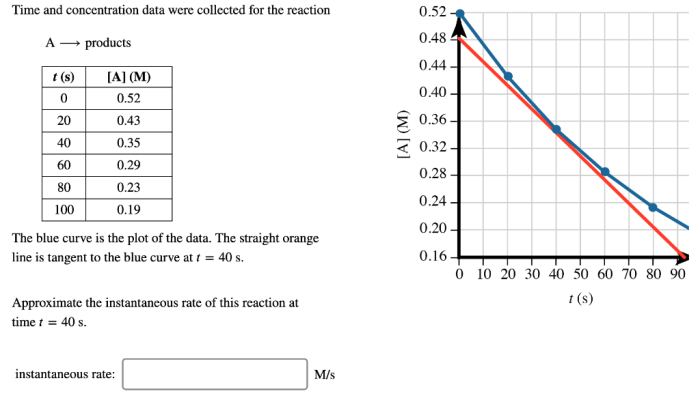Embark on a journey into the fascinating realm of acids and bases with our acids and bases review worksheet. This comprehensive guide delves into the fundamental concepts, reactions, properties, and applications of these crucial chemical substances.
Acids and bases play a vital role in our daily lives, from the batteries that power our devices to the soaps that cleanse our bodies. Understanding their behavior and properties is essential for a comprehensive grasp of chemistry.
Acids and Bases Basics: Acids And Bases Review Worksheet
Acids and bases are two important classes of chemical compounds that play a vital role in various chemical reactions and biological processes. An acid is a substance that donates a proton (H+ ion) when dissolved in water, while a base is a substance that accepts a proton when dissolved in water.Acids
typically have a sour taste and can react with metals to produce hydrogen gas. Common examples of acids include hydrochloric acid (HCl), sulfuric acid (H2SO4), and acetic acid (CH3COOH). Bases, on the other hand, typically have a bitter taste and feel slippery to the touch.
Common examples of bases include sodium hydroxide (NaOH), potassium hydroxide (KOH), and ammonia (NH3).The pH scale is a measure of the acidity or basicity of a solution. It ranges from 0 to 14, with 7 being neutral. Solutions with a pH below 7 are acidic, while solutions with a pH above 7 are basic.
The pH of a solution can be measured using a pH meter or by using pH indicator papers.
Acid-Base Reactions
Acid-base reactions are chemical reactions that involve the transfer of protons (H+) between an acid and a base. These reactions are important in many biological and chemical processes, such as digestion, respiration, and the production of many industrial chemicals.
Neutralization Reactions
Neutralization reactions are a specific type of acid-base reaction in which an acid and a base react in stoichiometric proportions to form a salt and water. The salt is an ionic compound composed of the cations from the base and the anions from the acid.
The water is formed by the combination of the protons from the acid and the hydroxide ions from the base.
- For example, when hydrochloric acid (HCl) reacts with sodium hydroxide (NaOH), the products are sodium chloride (NaCl) and water (H2O):
HCl + NaOH → NaCl + H2O
Acid and Base Properties
Acids and bases exhibit distinct properties that can be used to identify and differentiate them. These properties are often attributed to the chemical composition and behavior of these substances.
Properties of Acids
Acids are characterized by their corrosive nature, sour taste, and ability to react with certain metals to produce hydrogen gas. They typically contain hydrogen ions (H+) and have a pH value less than 7. Common examples of acids include hydrochloric acid, sulfuric acid, and acetic acid.
Properties of Bases
Bases, on the other hand, are known for their slippery feel, bitter taste, and ability to neutralize acids. They typically contain hydroxide ions (OH-) and have a pH value greater than 7. Examples of bases include sodium hydroxide, potassium hydroxide, and ammonia.
Comparison of Acid and Base Properties
The table below provides a summary of the key differences between acids and bases:| Property | Acid | Base ||—|—|—|| Taste | Sour | Bitter || Feel | Corrosive | Slippery || pH Value | < 7 | > 7 || Reaction with Metals | Produces hydrogen gas | No reaction || Reaction with Acids | Neutralizes acids | No reaction |These properties can be useful in distinguishing between acids and bases in various chemical contexts. For example, the sour taste of vinegar (acetic acid) and the slippery feel of soap (sodium hydroxide) are indicative of their acidic and basic nature, respectively.
Applications of Acids and Bases
Acids and bases are ubiquitous in our daily lives, playing vital roles in various industries. Their unique properties make them indispensable for numerous applications.
Uses of Acids in Everyday Life
- Batteries:Acids, such as sulfuric acid, serve as electrolytes in lead-acid batteries commonly used in cars and other vehicles.
- Cleaning Products:Acids, like hydrochloric acid, are used in cleaning agents to remove stains, dirt, and scale from surfaces.
- Food Preservation:Acetic acid (vinegar) is used as a food preservative to inhibit bacterial growth and extend shelf life.
Uses of Bases in Everyday Life
- Soaps and Detergents:Bases, like sodium hydroxide, are essential components of soaps and detergents, aiding in the removal of dirt and grease.
- Antacids:Bases, such as calcium carbonate, are used as antacids to neutralize stomach acid and alleviate discomfort.
- Paper Production:Bases are used in the production of paper to remove impurities and whiten the pulp.
Importance in Various Industries
- Chemical Industry:Acids and bases are fundamental in the production of chemicals, including fertilizers, plastics, and pharmaceuticals.
- Pharmaceutical Industry:Acids and bases are used in the synthesis and formulation of drugs and medications.
- Metallurgy:Acids are employed in metal extraction and purification processes, such as the refining of copper and gold.
Safety Considerations
Acids and bases are potentially hazardous substances that can cause harm to human health and the environment. It is crucial to handle, use, and dispose of acids and bases with utmost care and follow appropriate safety precautions.
Hazards Associated with Acids and Bases, Acids and bases review worksheet
- Corrosiveness:Acids and bases can cause severe burns on contact with skin and eyes due to their ability to dissolve organic matter.
- Toxicity:Some acids and bases are toxic and can cause adverse health effects upon ingestion, inhalation, or skin absorption.
- Fumes and Vapors:Certain acids and bases release corrosive fumes or vapors that can irritate the respiratory tract and eyes.
- Reactivity:Acids and bases can react violently with other chemicals, including metals, organic solvents, and reducing agents.
Safety Precautions for Handling Acids and Bases
- Wear Personal Protective Equipment (PPE):Always wear gloves, eye protection, and a lab coat when handling acids and bases.
- Use Proper Ventilation:Conduct experiments in a well-ventilated area or use a fume hood to minimize exposure to fumes and vapors.
- Handle with Care:Avoid spills and splashes by using appropriate glassware and techniques.
- Neutralize Spills:If an acid or base is spilled, neutralize it immediately with the appropriate neutralizing agent (e.g., sodium bicarbonate for acids, vinegar for bases).
- Store Safely:Store acids and bases in their designated areas, separate from incompatible chemicals and away from heat and light.
Importance of Proper Disposal
Proper disposal of acids and bases is essential to protect the environment and human health. Acids and bases should not be disposed of down the drain or in the trash. Instead, they should be neutralized and disposed of according to local regulations.
Contact your local waste management authority for specific disposal guidelines.
Answers to Common Questions
What is the pH scale?
The pH scale is a logarithmic measure of the acidity or basicity of a solution. It ranges from 0 to 14, with 7 being neutral, values below 7 indicating acidity, and values above 7 indicating basicity.
What is the difference between a strong acid and a weak acid?
Strong acids completely dissociate in water, releasing all their hydrogen ions. Weak acids only partially dissociate, releasing a smaller fraction of hydrogen ions.
What are the safety precautions for handling acids and bases?
Acids and bases can be corrosive and harmful. Always wear protective gear, such as gloves and goggles, when handling them. Avoid skin contact and inhalation of fumes.

